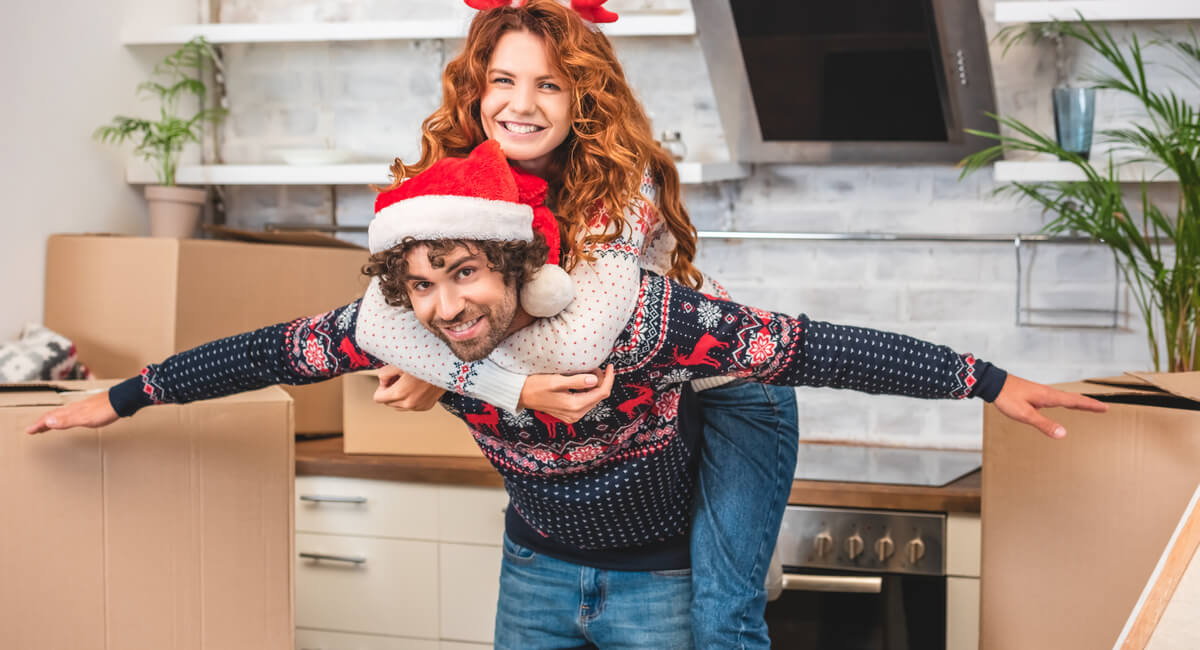Most people choose to move in the spring or summer to take advantage of the easy/ weather conditions and long daylight hours. The season in which you move may not always be within your control, though. Maybe you have a new career opportunity that requires you to move on short notice, or maybe family circumstances are forcing you to relocate as quickly as possible.
There are a few advantages to moving in the winter. Because fewer people are looking to move at this time of year, the real estate market may be less competitive. It also can be easier to hire movers and make travel arrangements in the off-season. If you get days off work for the holidays, you could also take advantage of this extra time.
However, moving in the winter also presents plenty of challenges. Inclement weather can affect your travel plans, and loading and unloading the van in the cold can be uncomfortable. Additionally, you have fewer daylight hours to work with. Moving around the holidays can be emotionally difficult and disruptive, too, especially if you have children.
It’s impossible to mitigate all the risks of moving in the winter, but you can take steps to make the experience better for everyone. Here are 10 tips for surviving a winter move:

1. Plan in Advance
No matter what time of year you move, preparing in advance is key. You should always start packing and planning before you think you need to. You can even start sorting through some belongings months before your moving day.
Carefully planning the logistics of your move is even more important in the winter. You want to minimize the length of time it takes for you to load and unload your moving van so that you’re not spending hours outside in the cold. You can accomplish this by strategically planning how you’ll pack the van. Keep boxes from the same rooms together in the van, and consider the layout of your new home and how you’ll distribute the boxes into each room.

2. Keep Your Moving Day Flexible
Although you should have a clear plan in place for your moving day, you should also allow for some flexibility. Winter weather can make moving dangerous, so you may have to adjust your timeline if a storm is approaching. Have a backup plan in case you need to postpone your move by a few days. You should mentally prepare for unexpected obstacles, too. Knowing and accepting that there’s a possibility your day won’t go according to schedule can decrease your stress.

3. Protect Your Possessions From the Weather
Your possessions should only be exposed to the winter elements for a short amount of time, but you should make sure they’re fully protected just in case. The cold and dry winter air can affect the conditions inside the moving van, too. Wooden furniture may be especially vulnerable, so you should secure it with blankets or furniture pads. You could also use tarps to protect your belongings from harsh weather.

4. Clear Your Walkways
Moving is a time-consuming and strenuous process, so it can be tempting to skip clearing your walkways in an effort to save time. However, wet or icy walkways could be catastrophic when moving. If you, a family member, or a professional mover slips and gets injured on the stairs or walkway, your moving plans could be completely disrupted. Before you start packing your moving van, clear all snow, ice, and slush from your walkway and driveway. Put plenty of salt or sand on the walkway to reduce the risk of slipping, too.

5. Protect Your Floors
It’s easy to track water and slush inside as you load the moving van, but you don’t want to damage your floors or create another mess to clean up on your moving day. To protect the floors, place tarps on highly trafficked areas of the home. You should also use felt pads on furniture legs to prevent the pieces from scratching the floors.

6. Prepare Your Car
If you’re undergoing a long-distance move, preparing your care for a winter road trip is vital. If your tires are old, consider replacing them before your move to ensure your safety during the drive. You should also have an emergency kit in your car with jumper cables, an ice scraper, blankets, and extra water in case you get stuck in a storm.
If you’re driving the moving van, make sure you feel comfortable operating the vehicle in winter weather. You might want to delay your move if there’s any chance of snow or ice. Driving the van will feel very different than driving your usual car, and navigating it on icy roads can be dangerous.

7. Consider Hiring Movers
Hiring professional movers will greatly reduce your stress during a winter move. With the extra help, you’ll load and unload the van much more quickly, cutting down on the amount of time you spend in the cold. Your movers are also familiar with safe lifting and loading techniques, so there’s a lower risk of injury. Letting a professional drive the van can be a relief, too.
If you do hire movers, you should make sure they’re taken care of throughout the process. Offer them warm drinks, hand warmers, or extra hats and gloves to combat the cold conditions. Make sure your driveway and walkways are safe to maneuver as well.

8. Set Up Utilities at Your New Home
You should contact the utility provider for your new home about two weeks before you move to ensure the utilities will be set up upon your arrival. This is important at any time of year, but it’s vital in the winter. You don’t want to have to navigate your new home in the cold and dark. In particularly cold regions, it can even be dangerous to move into your new home without working heat or electricity.

9. Allow Extra Travel Time
Because winter weather can be unpredictable, allow yourself more time than you think you need for your trip. You might encounter slowdowns or road closures that delay your arrival time. Giving yourself extra time will prevent you from rushing, which will reduce the risk of an accident or injury.

10. Prepare To Unload In The Dark
If possible, you should schedule your moving day so that you arrive in the daylight. However, unpacking in the dark might be necessary depending on how far you’re moving. In this case, you should prepare in advance for this situation. Consider using headlamps so that you can always see where you’re stepping. Alternatively, pack your most essential items separately so you only have to unload a few things upon arrival. Then, you can unload the rest of your belongings the next day.
Moving during the winter can create plenty of challenges, but it is possible to move successfully during the colder months. If you’re planning to move in the winter, you should plan for inclement weather, put safety measures in place, and protect your belongings from the harsh conditions. It might not be the most pleasant experience, but taking these steps will make the process safer and easier.


